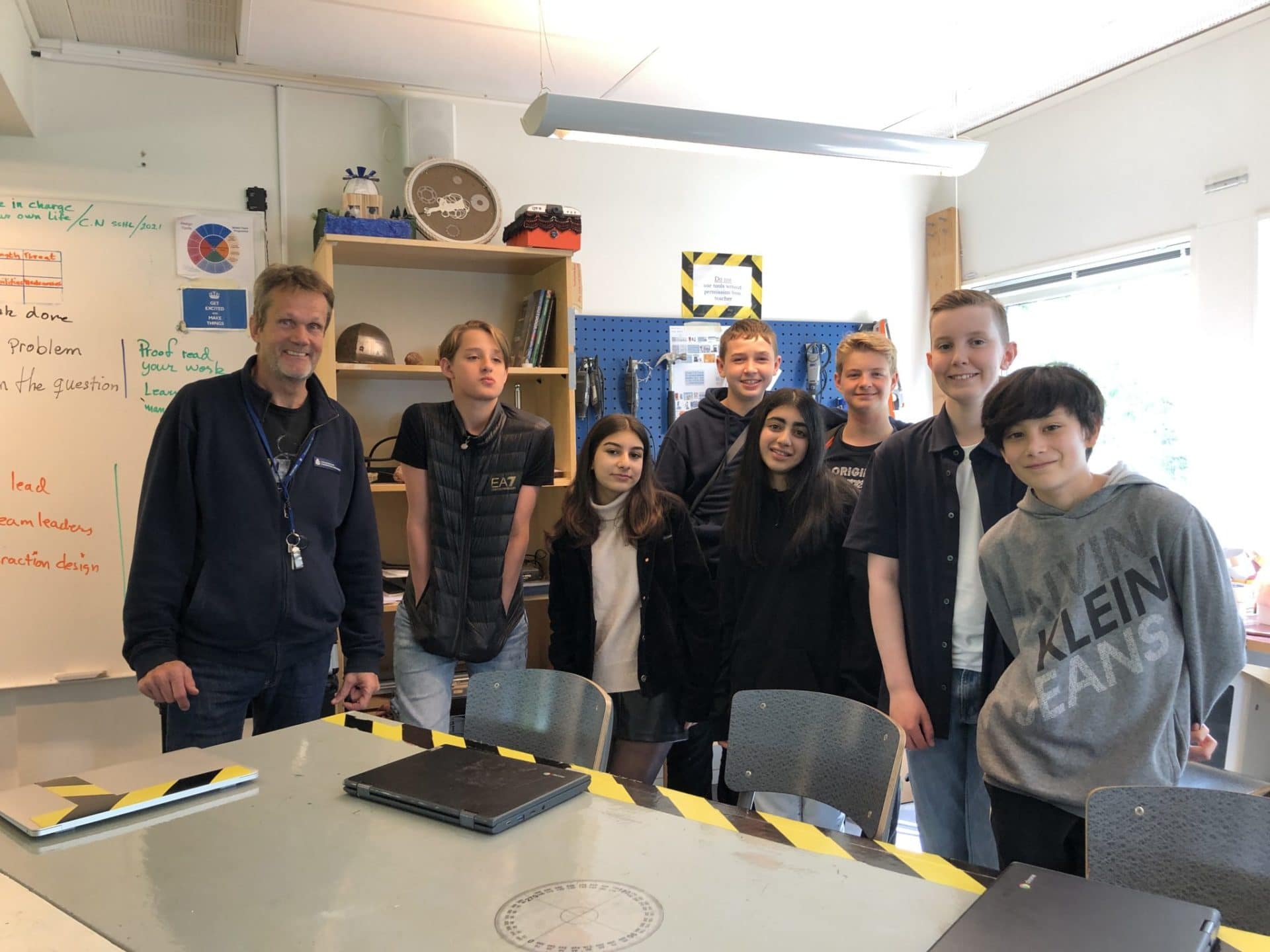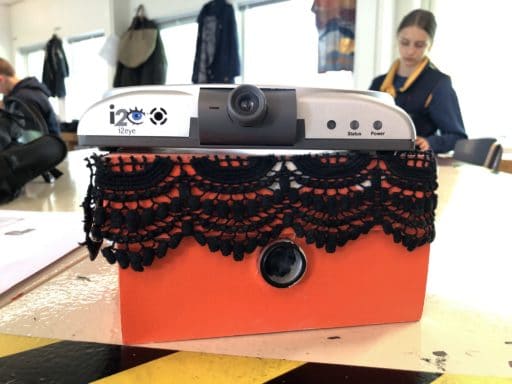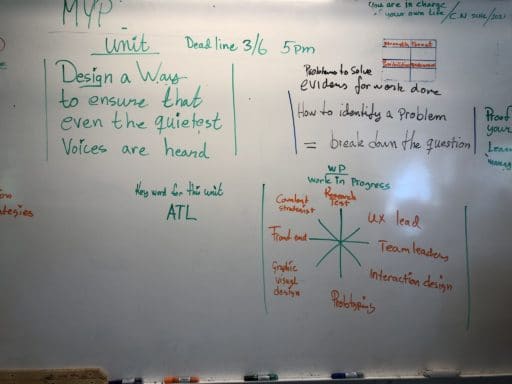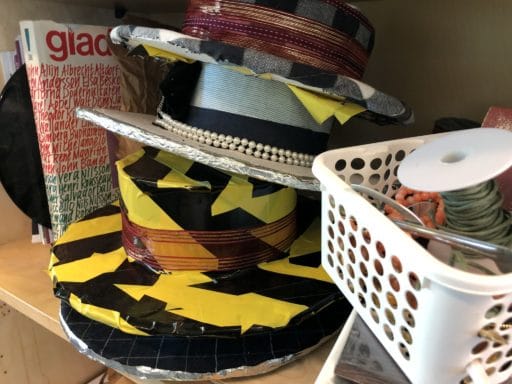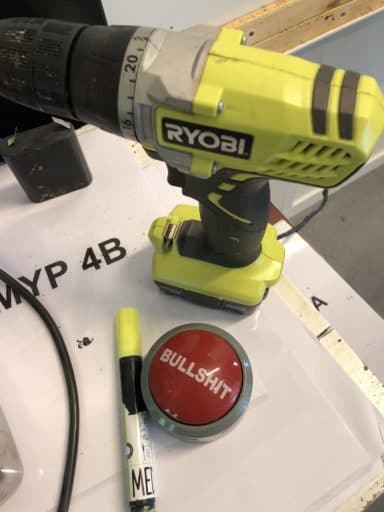Published 3 June 2022
UX Design for independent learners
In the workshop of Boda, magic happens. A group of MYP2 students start up a design lesson with a short meeting.
“Who holds the meeting?”
“Me”
“Who takes notes?”
“Me”
“Questions for today?”
“Where is E’s laptop?”
“Has everyone done the report?”
Three students assign themselves to search for E’s computer, and the rest start to research answers to the prompt “Design a way to ensure that even the quietest voices are heard.” The students get to narrow down the topic themselves and work individually or in groups to find possible solutions to their particular scenario. Each student is assigned a task that plays to their strengths and personalities.
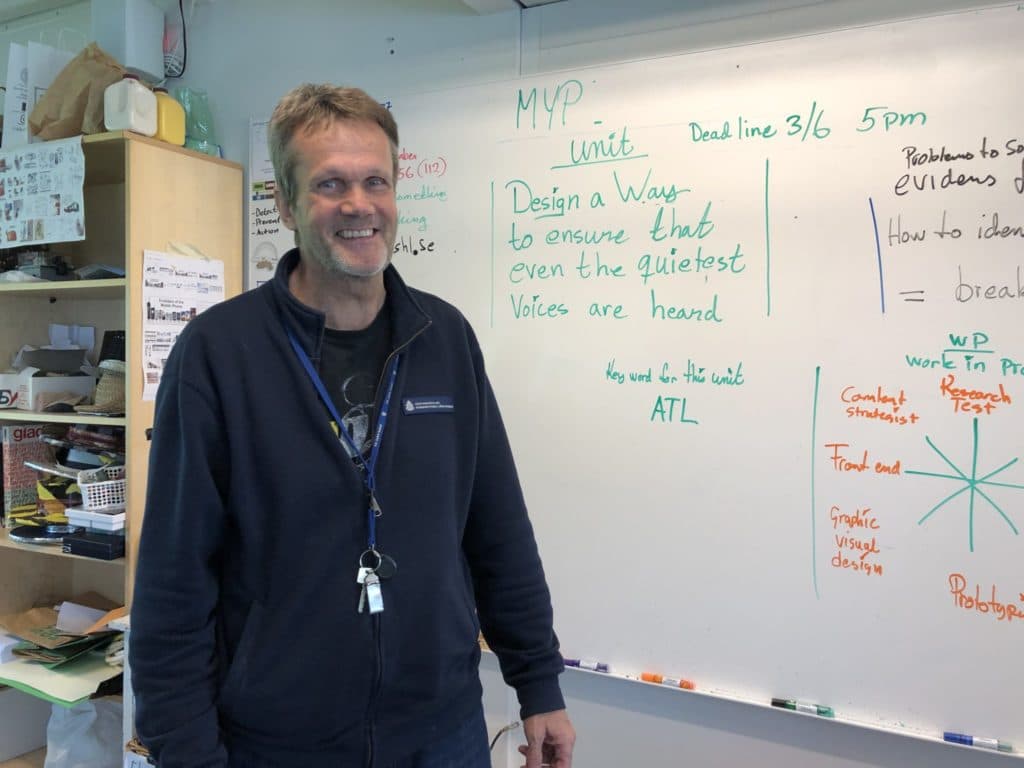
Kent keeps the instructions for the work task on the whiteboard.
– In simple terms: I create a unit with a challenging task, where the students get to learn life skills in a day to day life, Kent Carlstedt, teacher within IB MYP programme, explains. Then they appoint a team leader and divide into teams, and can structure their work themselves in order to get the task done by the deadline. At the end of each lesson, they get to reflect on how the lesson went, what they have learnt, and what could they do better.
The structure of each lesson is the same, so that the repetition keeps the students’ grasp of the methodology up to date. Soon, a collaborative problem solving method emerges where students learn leadership skills, time management skills, communication skills and collaboration skills.
– I’m seeing the students develop independence and they get to take control of their own learning, Kent continues. In the self-evaluation after each unit, and in discussions in class, we find out what the students’ strengths are and how they can develop other skills that will help move the project forward.”
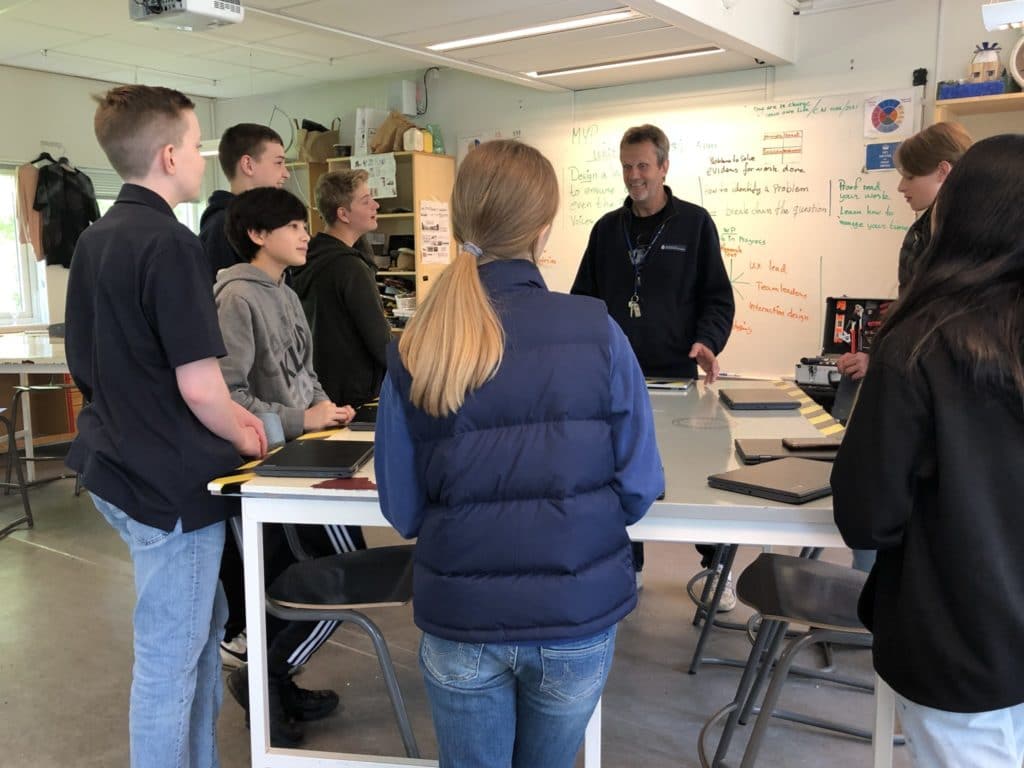
The students are often standing up during class. This makes them more focused and active.
When everyone is involved and engaged, the projects move forward more quickly. When focus fails, the students are encouraged, with support, to find ways to restructure their groups and move forward.
“In Design, there are no answers until you start giving the answers. So what was the learning outcome of today?”
“Break down the question.” So at the meeting at the end of the class, that’s what the students do.
“The unit doesn’t state a context, so I’m researching in many different ones.”
“You don’t always have to actually use your voice, like Greta Thunberg used only a sign.”
“But I think it’s important that we narrow down the question and give it context…”
With that, the discussion is underway. And starting from there, problems start getting solved.
Below: the group of MYP 2 students, together with their teacher in Design, Kent Carlstedt.
